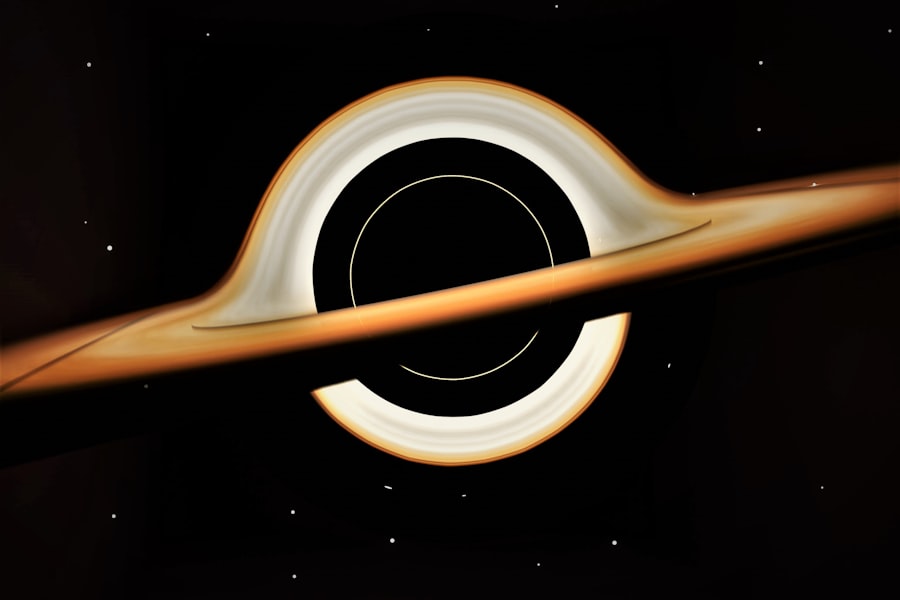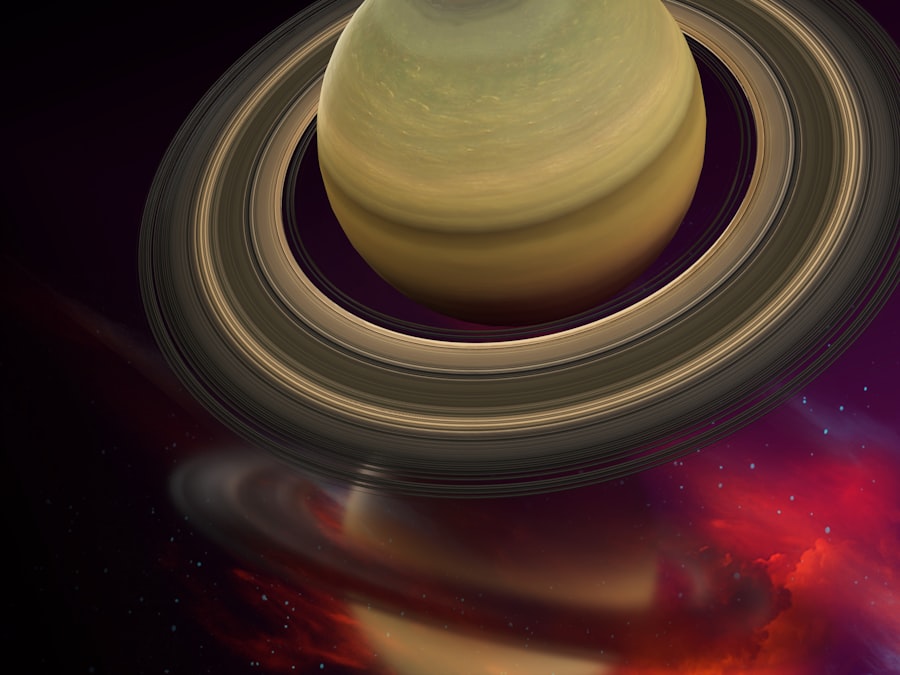Saturn, the sixth planet from the Sun, is renowned for its stunning rings, which are composed of ice and rock particles. Among the many fascinating phenomena associated with this gas giant are the enigmatic features known as Saturn’s spokes. These spokes are dark, radial structures that appear within the planet’s rings, creating a striking visual contrast against the bright backdrop of the ring system.
Their ephemeral nature and unique formation have intrigued astronomers and planetary scientists alike, prompting extensive research into their origins and characteristics. As Saturn continues to be a focal point of astronomical study, understanding these spokes offers insights not only into the planet itself but also into the broader dynamics of planetary ring systems. The spokes are not merely aesthetic features; they represent a complex interplay of physical forces and materials.
As researchers delve deeper into the mysteries of Saturn’s spokes, they uncover layers of complexity that enhance our understanding of planetary science and the intricate mechanisms at play in celestial environments.
Key Takeaways
- Saturn’s spokes are mysterious formations in the rings of Saturn that have intrigued scientists for decades.
- The discovery of Saturn’s spokes dates back to the 1980s when they were first observed by the Voyager spacecraft.
- Saturn’s spokes are believed to be made up of tiny ice particles that are lifted above the ring plane by an unknown mechanism.
- The appearance of Saturn’s spokes varies with the changing seasons on the planet, suggesting a connection to its atmospheric dynamics.
- Studying Saturn’s spokes is important for gaining insights into planetary dynamics and understanding the formation and evolution of planetary ring systems.
History of the Discovery of Saturn’s Spokes
The discovery of Saturn’s spokes can be traced back to the early observations made by the Voyager spacecraft in the 1980s. During its flybys, Voyager 1 and Voyager 2 captured stunning images of Saturn’s rings, revealing features that had never been seen before. Among these were the dark spokes, which appeared as transient structures that seemed to shift and change with time.
The initial observations sparked a wave of curiosity among scientists, who were eager to understand the nature and origin of these peculiar formations. Following the Voyager missions, further exploration was conducted by the Cassini spacecraft, which orbited Saturn from 2004 to 2017. Cassini provided a wealth of data and high-resolution images that allowed researchers to study the spokes in unprecedented detail.
The spacecraft’s instruments revealed that these structures were not static; rather, they exhibited dynamic behavior influenced by various factors, including Saturn’s rotation and its magnetic environment. This ongoing research has led to a deeper appreciation of the complexity of Saturn’s ring system and has opened new avenues for exploration in planetary science.
The Formation and Composition of Saturn’s Spokes

The formation of Saturn’s spokes is a subject of considerable scientific inquiry. Researchers believe that these features arise from the interaction between charged particles in Saturn’s rings and the planet’s magnetic field. The spokes are thought to be composed primarily of fine dust particles that become electrically charged and are subsequently influenced by electromagnetic forces.
This interaction can cause the particles to align in a radial pattern, creating the distinctive spoke-like appearance. The composition of the spokes is primarily linked to the materials found in Saturn’s rings. The rings themselves are made up of a mixture of water ice, rocky debris, and other compounds.
When particles within the rings become charged, they can be drawn into specific configurations that manifest as spokes. The precise mechanisms behind this process are still being studied, but it is clear that both gravitational forces and electromagnetic interactions play crucial roles in shaping these fascinating structures.
The Seasonal Variations in the Appearance of Saturn’s Spokes
| Month | Frequency of Spokes Appearance | Intensity of Spokes |
|---|---|---|
| January | Low | Weak |
| February | Medium | Moderate |
| March | High | Strong |
| April | Medium | Moderate |
| May | Low | Weak |
| June | Very Low | Faint |
One of the most intriguing aspects of Saturn’s spokes is their seasonal variability. As Saturn orbits the Sun, its axial tilt causes changes in illumination and temperature across its rings, leading to fluctuations in the visibility and characteristics of the spokes. During certain periods, particularly around equinoxes, the spokes can become more pronounced, while at other times they may fade or disappear altogether.
This seasonal behavior is not merely a visual phenomenon; it reflects underlying physical processes at work within the ring system.
As a result, researchers have observed that spokes can appear more prominently during specific seasons, providing valuable insights into how environmental factors impact ring dynamics.
The Role of Saturn’s Rings in the Formation of Spokes
Saturn’s rings serve as both a canvas and a catalyst for the formation of spokes. The intricate structure of these rings, composed of countless particles varying in size and composition, creates an environment ripe for dynamic interactions. The gravitational influences exerted by Saturn itself, along with its moons, contribute to the complex behavior observed within the rings.
The rings’ composition plays a significant role in how spokes form and evolve over time. Variations in particle size and density can lead to different charging behaviors, which in turn affect how particles interact with one another and with external forces. This interplay between particle dynamics and environmental conditions is essential for understanding not only the formation of spokes but also the overall stability and evolution of Saturn’s ring system.
Observing Saturn’s Spokes from Earth

While much of our knowledge about Saturn’s spokes has come from spacecraft observations, astronomers on Earth have also made significant contributions to understanding these features. Ground-based telescopes equipped with advanced imaging technology have allowed scientists to monitor changes in Saturn’s rings over time. Although Earth-based observations lack the resolution provided by spacecraft like Cassini, they still offer valuable data on seasonal variations and long-term trends.
Observing Saturn from Earth presents unique challenges due to atmospheric interference and light pollution. However, dedicated astronomers have developed techniques to mitigate these issues, enabling them to capture images that reveal subtle details about Saturn’s rings and spokes. These observations complement data collected by space missions, creating a more comprehensive picture of how these enigmatic structures behave over time.
The Connection Between Saturn’s Spokes and Its Magnetic Field
Saturn’s magnetic field plays a pivotal role in shaping the dynamics of its ring system, including the formation and behavior of spokes. The planet possesses a strong magnetic field generated by its internal dynamo processes, which influences charged particles within its rings. This magnetic environment can cause particles to become charged differently based on their location within the rings, leading to variations in how they interact with one another.
The relationship between Saturn’s magnetic field and its spokes is complex and multifaceted. As charged particles move through this magnetic field, they experience forces that can cause them to align into spoke-like structures. Understanding this connection is crucial for unraveling the mysteries surrounding spoke formation and provides insights into how magnetic fields influence planetary ring systems more broadly.
The Relationship Between Saturn’s Spokes and Its Moons
Saturn is home to numerous moons, each exerting gravitational influences on the planet’s ring system. These moons play a significant role in shaping not only the structure of Saturn’s rings but also the formation and dynamics of spokes. The gravitational pull from nearby moons can create waves and perturbations within the rings, which may contribute to the conditions necessary for spoke formation.
Additionally, some moons are thought to act as shepherds for certain ring features, helping to maintain their structure over time. This interaction between moons and rings adds another layer of complexity to our understanding of Saturn’s spokes. By studying these relationships, scientists can gain insights into how celestial bodies interact within a planetary system and how such interactions influence ring dynamics.
The Importance of Studying Saturn’s Spokes for Understanding Planetary Dynamics
The study of Saturn’s spokes extends beyond mere curiosity; it holds significant implications for understanding planetary dynamics as a whole. By examining how these features form and evolve, researchers can glean insights into fundamental processes that govern not only Saturn but also other celestial bodies with ring systems. This knowledge contributes to a broader understanding of planetary formation, evolution, and stability.
Moreover, studying Saturn’s spokes allows scientists to explore concepts such as electromagnetic interactions, particle dynamics, and gravitational influences within a planetary context. These insights can inform theories about other planetary systems beyond our own, enhancing our comprehension of how diverse environments shape celestial phenomena across the universe.
The Future of Research on Saturn’s Spokes
As technology advances and new observational techniques emerge, the future of research on Saturn’s spokes looks promising. Ongoing analysis of data collected by Cassini continues to yield new findings about these enigmatic structures. Additionally, future missions aimed at exploring Saturn or similar gas giants may provide even more detailed information about ring dynamics and spoke formation.
Researchers are also exploring innovative methods for simulating ring dynamics in laboratory settings or through computer modeling. These approaches can help scientists test hypotheses about spoke formation under controlled conditions, potentially leading to breakthroughs in understanding this captivating phenomenon.
The Beauty and Mystery of Saturn’s Spokes
In conclusion, Saturn’s spokes represent a captivating intersection of beauty and scientific intrigue within our solar system. Their ephemeral nature invites wonder while simultaneously challenging researchers to unravel their complexities. As scientists continue to explore these enigmatic features through both observational studies and theoretical modeling, they contribute to a deeper understanding of not only Saturn but also planetary dynamics as a whole.
The ongoing fascination with Saturn’s spokes underscores humanity’s enduring quest for knowledge about our universe. Each discovery brings us closer to comprehending not just the mechanics behind these striking formations but also their broader implications for understanding celestial phenomena across time and space. As research progresses, it is clear that Saturn’s spokes will remain a source of inspiration for generations to come—an enduring testament to both nature’s artistry and science’s relentless pursuit of truth.
Saturn’s spokes, mysterious features that appear and disappear in the planet’s rings, have intrigued scientists for years. These seasonal phenomena are believed to be influenced by the planet’s magnetic field and the interaction of charged particles with the ring material. For a deeper understanding of this fascinating topic, you can read more in the related article on XFile Findings.
FAQs
What are Saturn’s spokes?
Saturn’s spokes are mysterious, radial dark features that appear in the rings of the planet. They were first observed by the Voyager spacecraft in the 1980s.
Why do Saturn’s spokes appear seasonally?
Saturn’s spokes appear seasonally because they are thought to be caused by the planet’s changing seasons. As Saturn orbits the sun, its tilt causes the angle of sunlight to change, which in turn affects the formation and visibility of the spokes.
How do Saturn’s changing seasons affect the appearance of the spokes?
During Saturn’s equinox, when the sun is directly over the planet’s equator, the spokes are not visible. However, as the planet moves towards its solstice, the angle of sunlight changes, and the spokes become more prominent.
What are some theories about the formation of Saturn’s spokes?
One theory is that the spokes are made up of tiny dust particles that are lifted off the rings by electrostatic forces. These particles then become charged and are levitated above the ring plane, creating the spoke-like features.
How do scientists study Saturn’s spokes?
Scientists study Saturn’s spokes using data from spacecraft such as Cassini, which has provided detailed images and measurements of the planet’s rings. They also use computer models to simulate the formation and behavior of the spokes.
